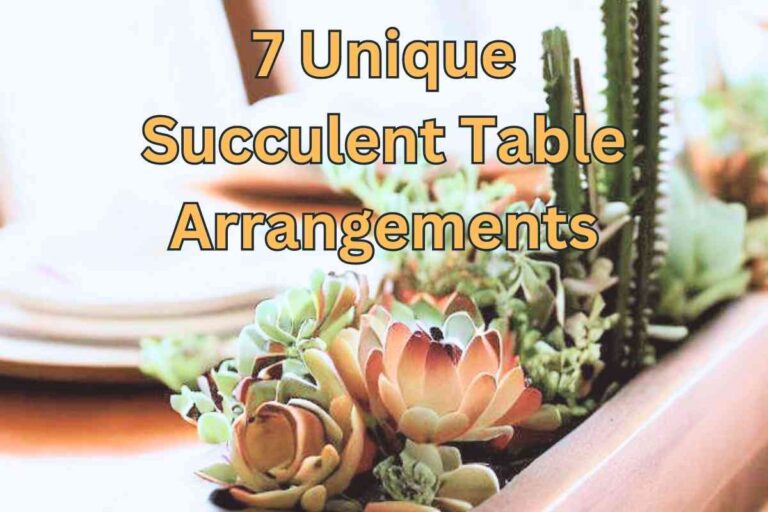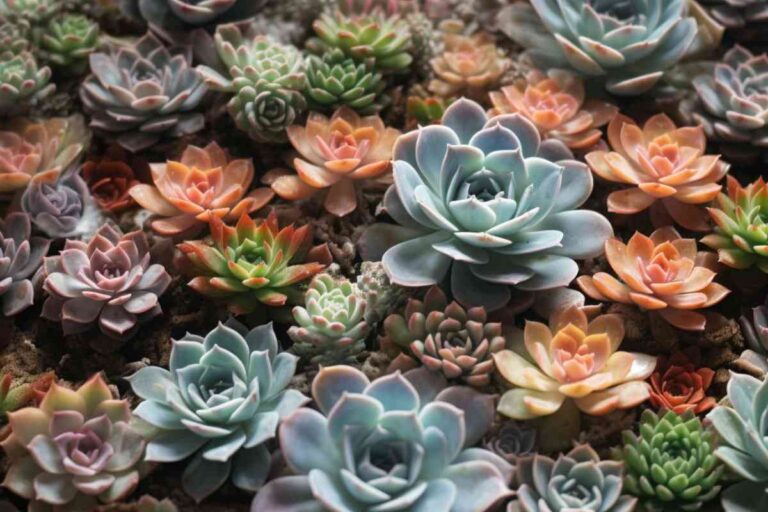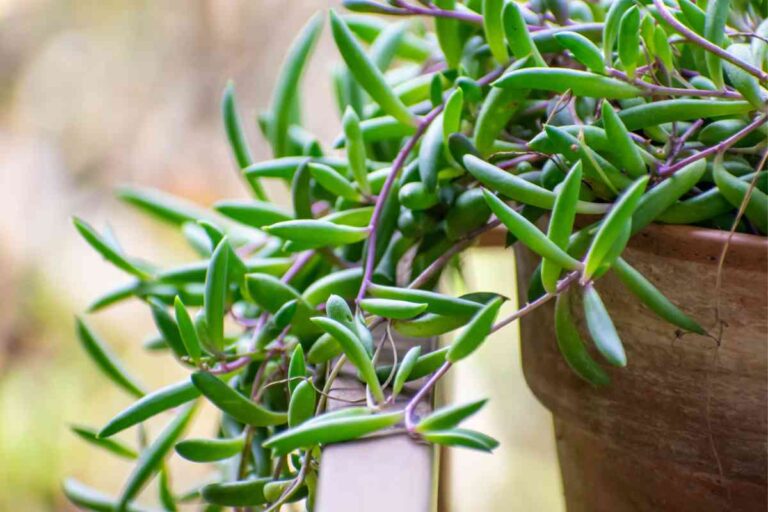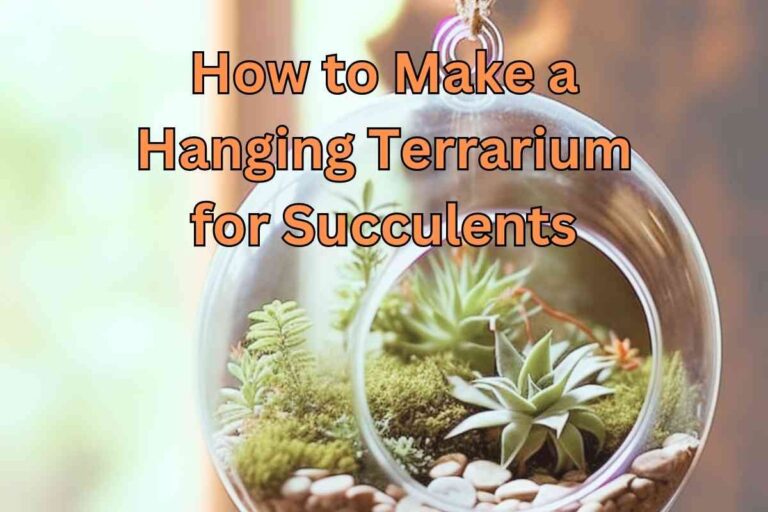Caring for Succulents: Indoor and Outdoor Tips
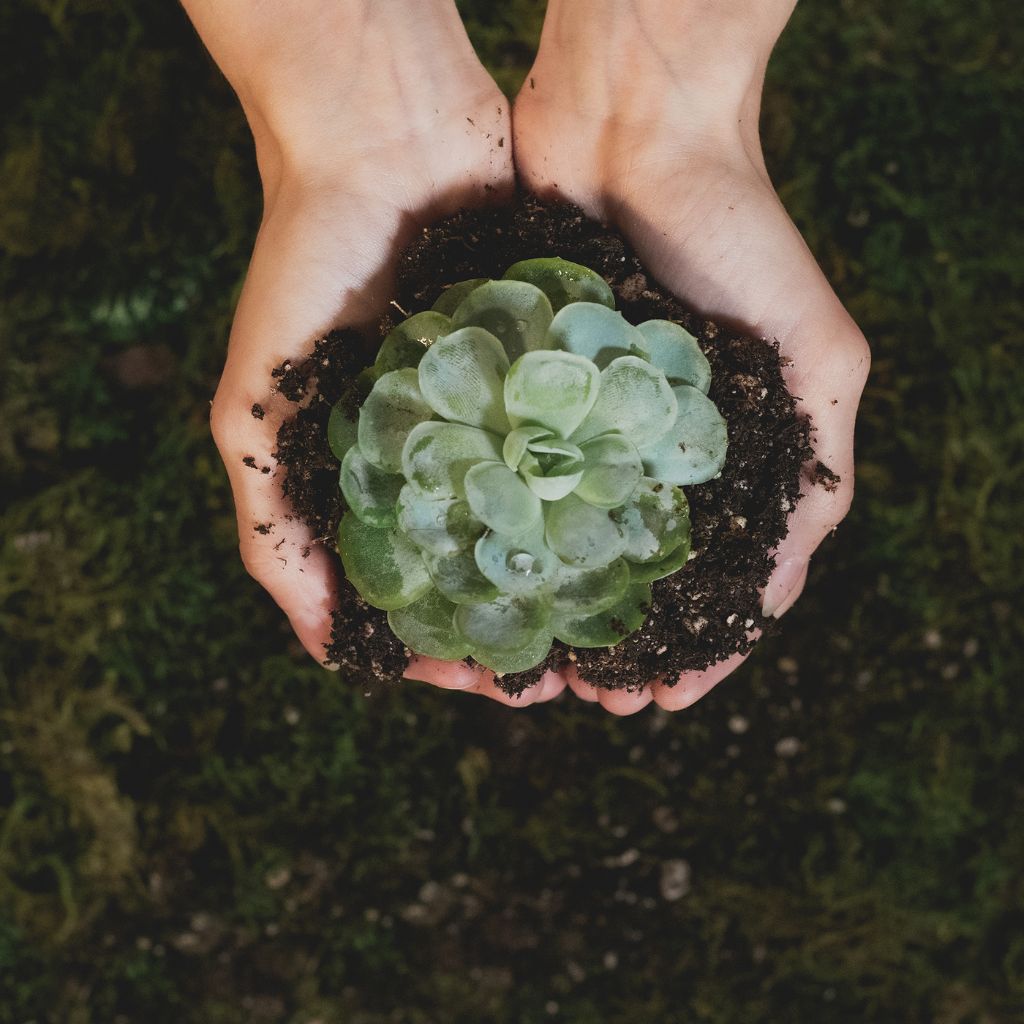
Succulents are a stunning addition to any outdoor or indoor garden. Their hardiness to drought and low-humidity conditions make them the perfect solution for gardeners who aren’t always attentive to their plants or go out of town for periods of time.
The vast array of types of succulents to collect and their ease of propagation can make a succulent novice into an enthusiast in no time. I’m confident that you, like me, won’t be able to resist those perfect little succulent pups. Before you know it, you’ll have more than you can handle.
Here’s everything you could possibly need to know to keep any succulent happy.
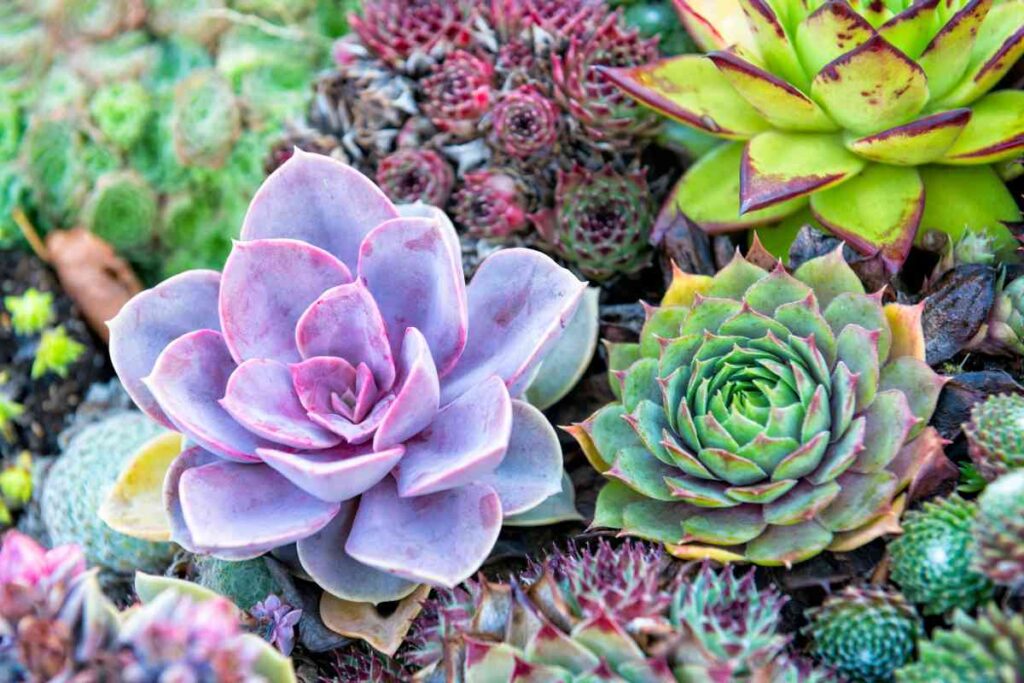
Selecting the Right Soil Mix for Indoor and Outdoor Succulents
Succulents thrive in soil that is well-draining, meaning it allows water to flow through easily and doesn’t hold onto moisture for too long. This is because succulents are adapted to growing in arid conditions and have evolved to store water in their leaves, stems, and roots.
All succulent varieties need well-draining soil, but succulents are a wide family group with different needs. You’ll likely find that the soil mix that’s perfect for your garden and growing conditions isn’t right for your fellow gardener.
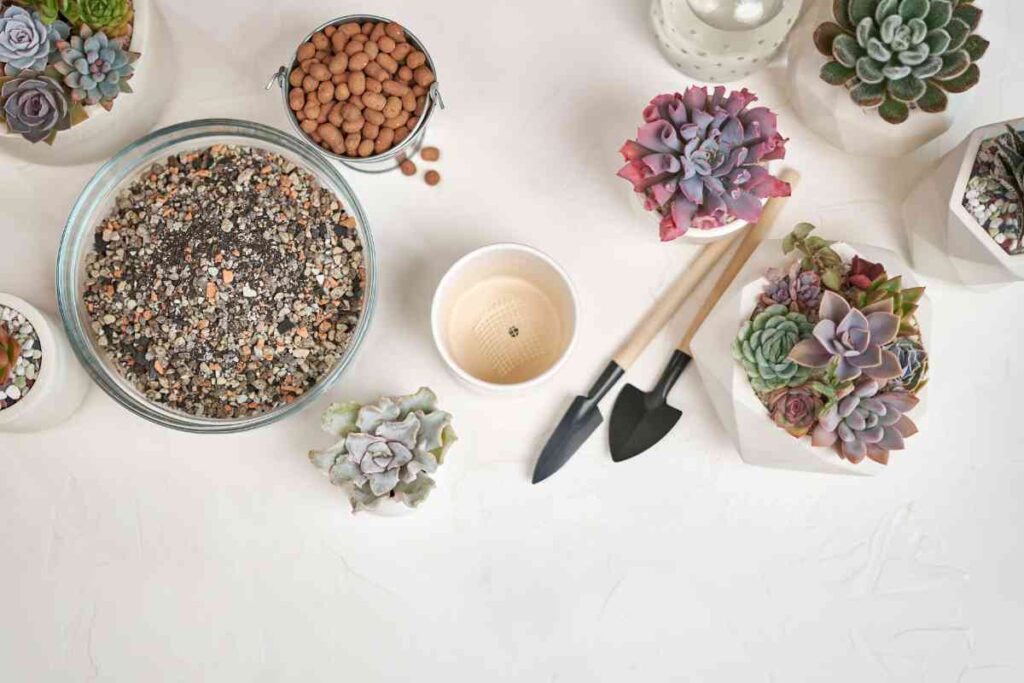
You can use a commercial succulent or cactus mix, but you may have more fun developing your own potting mix.
Have fun playing around with the soil combinations that work for you. Just remember that succulents like soil that is 1 part organic to 2 parts mineral. As long as you stick to that ratio, you’ll have happy succulents.
Pick ingredients from the list below to choose an ideal commercial soil or mix your own.
Organic Materials
Make up 1 part of your mix with these:
- Compost: Compost provides a slow-release source of nutrients. However, it should be used in moderation, usually less than 20% of the total soil volume, to prevent excessive moisture retention and fertilization and to maintain good drainage. Use a well-aged compost that has fully decomposed and does not contain large pieces or chunks that can clog soil pores.
- Coco coir: This is a renewable and sustainable alternative to peat moss, which is often used in potting mixes. Coco coir is great at retaining water while still allowing for good drainage. It doesn’t compact over time, allowing roots to grow freely and preventing root rot. Unlike peat moss, it absorbs water quickly so it doesn’t leave dry spots. Use plenty of it in very dry environments to avoid having succulents be under watered.
- Worm castings: Worm castings contain a rich blend of nutrients and minerals that are essential for succulent growth. Additionally, they help to improve soil structure and water retention. Just be sure to use them in moderation to avoid over-fertilizing your plants. If you know you don’t fertilize succulents as much as you should, using worm casings in the soil or potting soil is a good idea.
Mineral Materials
Make up 2 parts of your mix with these:
- Coarse sand. Use a coarse grit like builder’s sand, which has larger particles than regular sand. This is a fast draining, affordable choice for both indoor and outdoor succulents, whether you’re potting or adding to soil for outdoor succulent gardens.
- Pumice: Pumice is a volcanic rock that is lightweight and porous, making it an excellent addition to a succulent soil mix. It helps to improve drainage and prevent soil compaction. Since it’s so light, it’s great to reduce the weight of pots when growing succulents indoors.
- Perlite: This natural, volcanic glass is a bit harder to find, but it offers a light and airy soil. Perlite is good for potting succulents because it improves drainage, aeration, and temperature control in soil, and prevents disease in succulents. It’s a bit pricey for outdoor use, but it’s great for smaller potting projects.
- Gravel: Gravel is cheap and chemically inert, so it’s a great standard for any succulent potting. Choose particle sizes between 1/8″ and ¼”. Rinse the gravel thoroughly to remove fine dust particles, which can retain moisture. Always mix gravel into the soil, don’t layer it at the bottom of the pot.
- Decomposed granite. Like gravel, decomposed granite has weathered and broken down into small pieces. It can be used as a mineral component in succulent soil mixes as it provides good drainage and is resistant to breaking down over time.
- Diotamaceous earth: Diatomaceous earth is a natural, porous material that helps to improve soil drainage and aeration while also absorbing excess water, which is ideal for succulents. It’s cheap enough to use indoors and out. It also deters crawling insects, so sprinkle some extra on the top of the pot or soil.
- Chicken grit is a small, crushed rock material made of granite or quartz that is typically fed to chickens to aid in their digestion. It’s useful for planting succulents because it is coarse and provides excellent drainage. Chicken grit is relatively affordable and easily available in many gardening centers or feed stores.
- Non-soluble cat litter and oil dry. I know, I know, cat litter? But seriously, this is a great, cheap option. Both non-soluble cat litter and oil dry are made from calcined molar clay, which is a type of volcanic rock that has been processed to improve its absorbency and porosity. They can improve drainage and provide air pockets in the soil for healthy roots.
Planting Indoor and Outdoor Succulents
Planting Succulents Outdoors
If the ground is boggy or is very heavy in clay, or the wrong ph or richness, most succulents won’t thrive, regardless of how much you add to the soil. If your soil is sandy, loamy, and quick-draining, you may be able to plant directly in the ground. However, many people struggle to succesfully grow succulents in their garden soil.
Mounds, raised beds, or pots are great solutions. Succulents thrive in terra-cotta or concrete pots and raised plantings areas of all kinds. It’s even easy to propagate your hanging succulents to create beautiful displays for the porch or deck.
Mounds are an easy and natural-looking solution to poor soil quality for succulents. Simply pile the appropriate soil mix in the area you want to plant, add some attractive rocks or decor to hold the soil in place and add visual interest, and plant your succulents.
Since succulent soil is good for so many other kinds of plants, you’ll find all kinds of opportunities for companion planting in these arrangements.
Planting Indoor Succulents
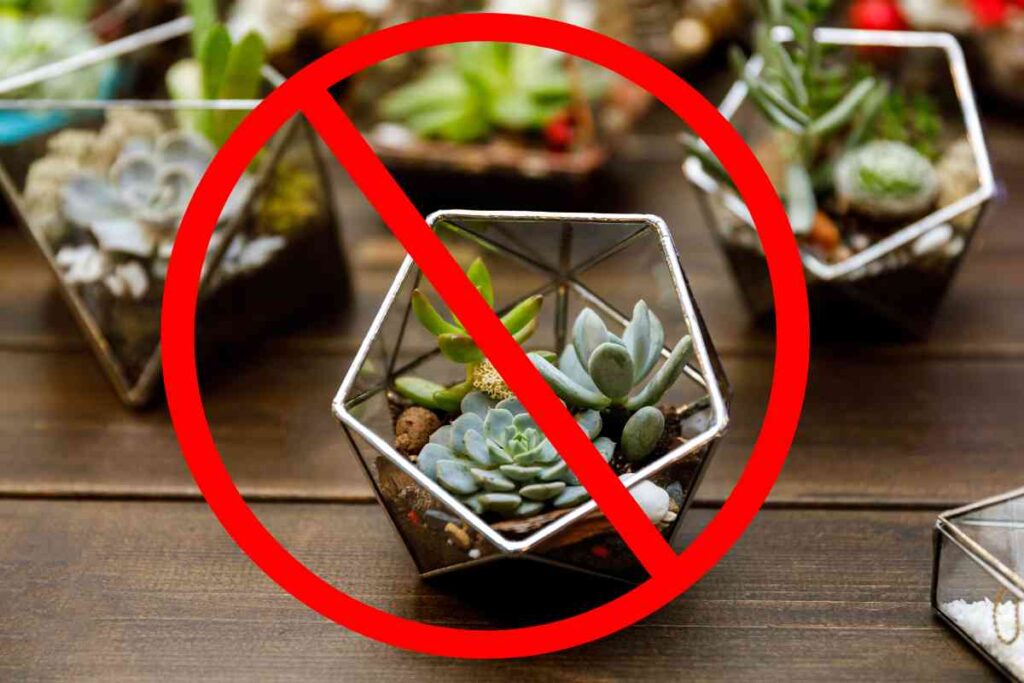
What not to Choose: Terrariums
Know those adorable little glass terrariums full of succulents that are so popular on Pinterest and Instagram? Think twice before trying it. It turns out that keeping a perfect little desert botanical garden behind glass isn’t an easy feat.
The reasons that terrariums are a poor choice for growing healthy succulents are a great way to help you decide which pots are a good option.
Why are terrariums bad for succulents?
- Light. Succulents thrive on bright indirect light, but concentrating that light through glass can easily burn these fleshy plants.
- Drainage. Succulents are tough plants, but their roots are highly prone to rot. The slightest over-watering or accumulation of condensation in a glass container can destroy the roots. Always choose a pot with drainage holes for the health of your plant.
- Airflow. Succulents need plenty of air moving around them to prevent rot and disease, which is not possible in a closed terrariums
Terra-cotta pots
I know, boring old terra-cotta. But these old-fashioned pots are a superb option for growing succulents indoors or out.

Terra-cotta drains well, leaving no pockets for moisture to form. It’s also thick enough to protect the roots from extreme temperatures that may otherwise shock the plant.
What About Ceramic Pots for Succulents?
Ceramic is terra-cotta’s fancier cousin. If you want a showy plant collection, you’ll likely be drooling over some ceramic pots. However, there are some reasons not to spend more on ceramic.
Unlike ceramic, terra-cotta is porous. Air and moisture pass through the walls of the pot, promoting good air circulation and allowing the soil to dry out more quickly.
Ceramic pots are glazed and non-porous so they dry out slower and are more likely to trap moisture in the soil and lead to root rot.
Terra-cotta pots have a natural pH that is similar to the pH of most succulent soils. This means they won’t alter the pH of the soil like glazed ceramic pots can.
Succulents Like Cozy Pots
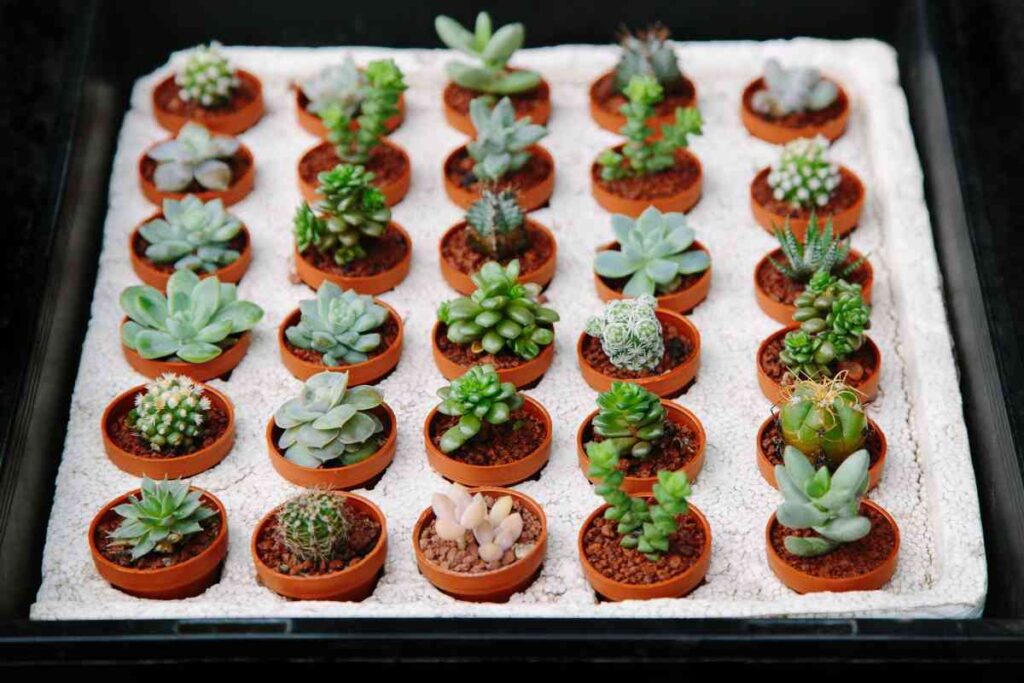
Hands down, my favorite thing about succulents is how adorable they are in tiny pots.
Turns out that small succulent pots are the right idea. If you’re starting succulent pups or leaf cuttings, start with a tiny starter pot.
When you re-pot your succulents, only go about an inch bigger than the root ball. Don’t be in a rush to re-pot either. Succulents don’t mind being rootbound for a while.
Watering Indoor and Outdoor Succulents
When it comes to watering succulents, less is more. Overwatering is one of the most common mistakes succulent owners make. You want the soil dry before you rewater.
Watering Ourdoor Succulents
If you live somewhere with heavy rainfall, your outdoor succulents may struggle. The right potting mix and at least about six hours of sun to dry the soild out can help. Remember to add organic content back as nutrients are washed away.
Many people find that succulents don’t need supplemental watering once established. If you do need to water your outdoor succulents, water them long enough for the water to thoroughly drench the soil to build strong, deep root systems that will become drough resistant in time.
Watering Indoor and Patio Succulents
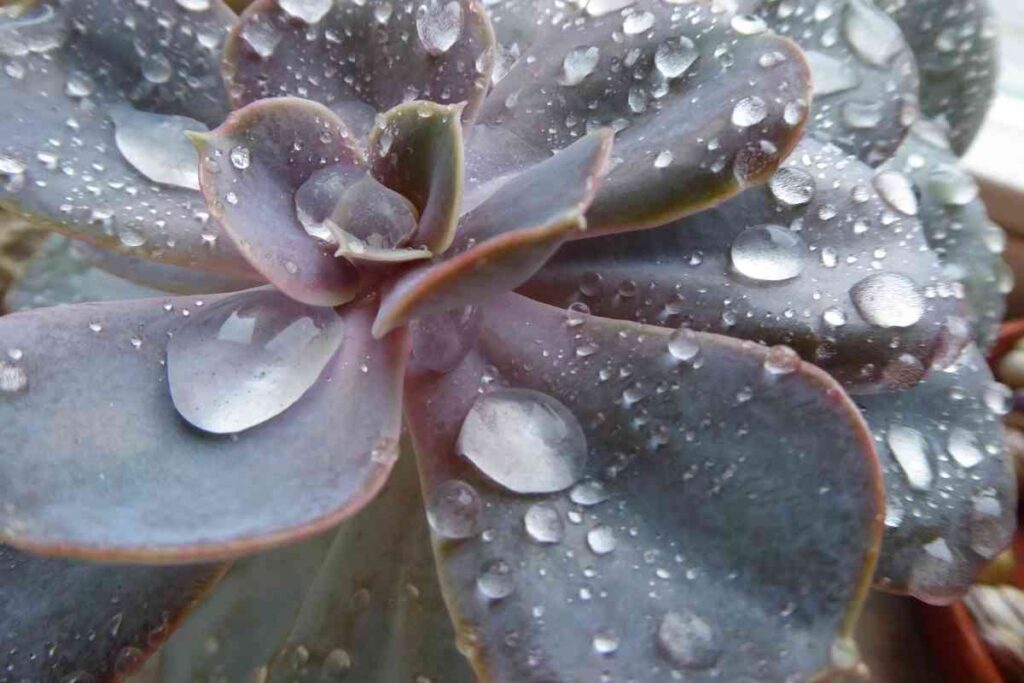
Watering is much easier to control for succulents kept indoors or under cover on patios or porches. Just remember they’re not like other houseplants. Under watering is unlikely to be your problem. Over watering is the primary culprit when succulents do poorly indoors.
- Check the soil moisture level: Check the soil moisture level by sticking your finger into the soil up to the first knuckle. If the soil feels dry, it’s time to water. If it still feels moist, wait a few more days before checking again. You can also pick up the pot to feel how heavy it is. If you do this regularly, you’ll be able to tell immediately whether your succulent needs water or not.
- Water thoroughly: When you water your succulent, water it thoroughly until water runs out of the drainage holes at the bottom of the pot. This ensures that the entire root system gets watered and prevents dry pockets of soil. It also encourages strong, deep roots.
- Don’t let water sit in the saucer: After watering, be sure to empty any excess water from the saucer to prevent the soil from becoming waterlogged. You can also place gravel in saucers to raise them up, but be careful not to create too much humidity around your succulents.
- Water less frequently in winter: During the winter months, succulents go into a dormant period and require less water. Adjust your watering schedule accordingly to avoid overwatering.
- Only water the soil: Succulents don’t appreciate water on their leaves. Leaves can easily be rotted, and sun spots can ruin their appearance.
Remember, succulents are adapted to dry conditions and can go for long periods without water. It’s better to underwater than to overwater. A dry succulent can easily be revived, but a wet one is difficult to save. You can save a succulent without roots after they’ve been rotted away by too much water, but it’s a challenge.
Providing Adequate Sunlight and Shade for Indoor and Outdoor Succulents
Different succulent species have different light requirements. Some succulents prefer direct sunlight, while others prefer bright, indirect light.
Succulents marketed for indoors typically prefer lower light, but their needs vary. Some outdoor succulents can handle full sun, while others prefer some shade. Make sure you know the light requirements of your specific succulent species so you can position it correctly.
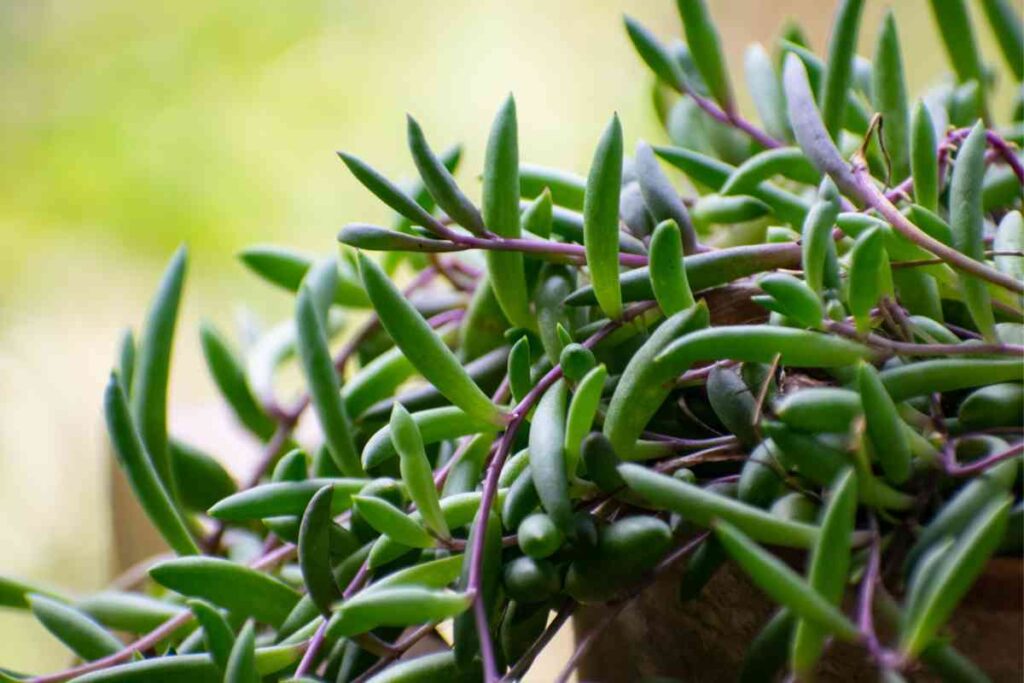
Lighting for Indoor Succulents
- Place your succulent near a sunny window: Succulents generally prefer bright, indirect light, so placing them near a sunny window is a good idea. However, be careful not to place your succulent directly in the path of hot, intense sunlight, as this can scorch the leaves.
- Rotate regularly: Succulents grow towards the light, so it’s a good idea to rotate your succulent every few weeks to ensure even growth.
- Use artificial lighting: If your home doesn’t have any windows that receive sufficient sunlight (or the spots that get good light are already full of succulents, as they are in my house), you can use artificial lighting to provide your succulent with the necessary light. A grow light specifically designed for succulents will provide the right spectrum of light for their growth. Any strong grow light
- Observe your succulent: Watch your succulent closely to see how it responds to the light. If the leaves begin to stretch or become pale, it may be getting too little light. If the leaves turn brown or shrink, it may be getting too much light.
Finding the right light conditions for your indoor succulents may require a bit of trial and error. Thankfully, it’s pretty easy to pick up the plant and move it around. With a little patience and observation, you’ll be able to position your succulent in the perfect spot to promote healthy growth and vibrant colors.
Lighting for Outdoor Succulents
Follow the lighting recommendations for your particular species of outdoor succulent when choosing a location. Look for signs of sun stress like leaves that are dry, brittle , browning, or shriveled.
Succulents that never seem to grow may also be getting too much sun. In general, about six hours of direct or lightly dappled sun is best for most outdoor succulents.
Fertilizing Your Indoor and Outdoor Succulents
Proper fertilization is essential for the health and growth of your succulents. Here are some key things to keep in mind when fertilizing your plants.
When to Fertilize Your Succulents
Succulents should be fertilized during their active growing season, which is typically in the spring and summer. Avoid fertilizing during the fall and winter, as this is when many succulents go dormant. This is typically true of both indoor and outdoor plants, unless you’re altering seasonal changes with grow lights.
Choosing the Right Fertilizer for Your Succulents
When selecting a fertilizer for your succulents, look for a balanced, water soluble fertilizer that is low in nitrogen. Nitrogen promotes leafy growth, which is not ideal for succulents. Instead, look for a fertilizer that is high in phosphorus and potassium, which will help promote strong root growth and flowering.
Another option is to use a slow-release fertilizer, which will provide your succulents with nutrients over a longer period of time. This can be especially helpful if you tend to forget to fertilize your plants regularly.
Using organic materials that release into the soil over time, like worm castings and compost, is a great way to fertilize succulents naturally.
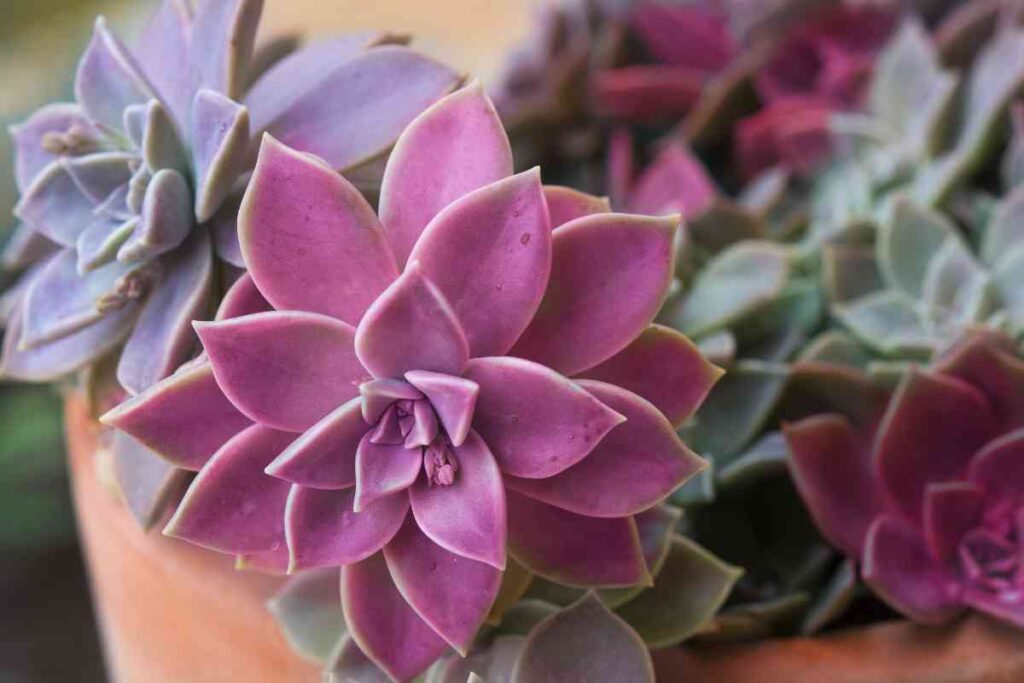
How to Apply Fertilizer to Your Succulents
If using a general fertilizer, dilute it to half or even a quarter of the recommended strength. Succulents are sensitive to fertilizer, and too much can burn their roots and cause damage. A fertilizer designed for succulents can be used as directed.
If your outdoor succulents are often overwatered with rain, you may need to fertilize more often to replace the lost nutrients.
Apply fertilizer to the soil around the base of the plant, being careful not to get any on the leaves or stem. Water the plant well after fertilizing to help distribute the nutrients throughout the soil.
Avoid fertilizing newly planted succulents for the first few months, as their roots are still getting established and can be easily damaged by fertilizer.
Common Succulent Pests and How to Deal with Them
Identifying Common Succulent Pests
Succulents are generally quite hardy and resistant to pests when care for properly. Pests on your succulents likely means the growing conditions aren’t right.
Check to see if all of the other conditions we discussed here are met in the care of your succulent. Solving any problems in your succulents growing conditions is essential before you start to address bugs.
That said, there are a few common pests that can cause problems. Some of the most common pests that can affect succulents include mealybugs, spider mites, and scale insects. Here’s more about them and what to do about them.
Mealybugs: These pests are small, white, and fluffy-looking. They often congregate in large numbers on the leaves and stems of succulent plants.
Spider Mites: These pests are tiny, spider-like creatures that can be difficult to see with the naked eye. They often cause yellowing and wilting of the leaves.
Scale Insects: These pests are small and flat, and they often look like small bumps on the leaves and stems of succulent plants.
Regardless of which of these pests are affecting your succulents, the treatment is the same. Use a cotton swab dipped in rubbing alcohol or neem oil to remove the bugs from the plant. You can also use insecticidal soap, but be careful it’s safe for succulents.
Dish soap can be used to get rid of pests on your succulents. However, it is important to use a mild soap and to dilute it with water before applying it to your plants. Be sure to rinse the plant thoroughly after applying the soap solution .
Propogating Indoor and Outdoor Succulents
One of the best things about succulents is how easy they are to propogate. They may not grow as quickly as other plants, but I almost never see a succulent I’ve propogated fail.
In fact, I can’t help saving every leaf that falls off, leading to way more succulent pups than I know what to do with. It’s truly amazing how a succulent without roots can survive and thrive.
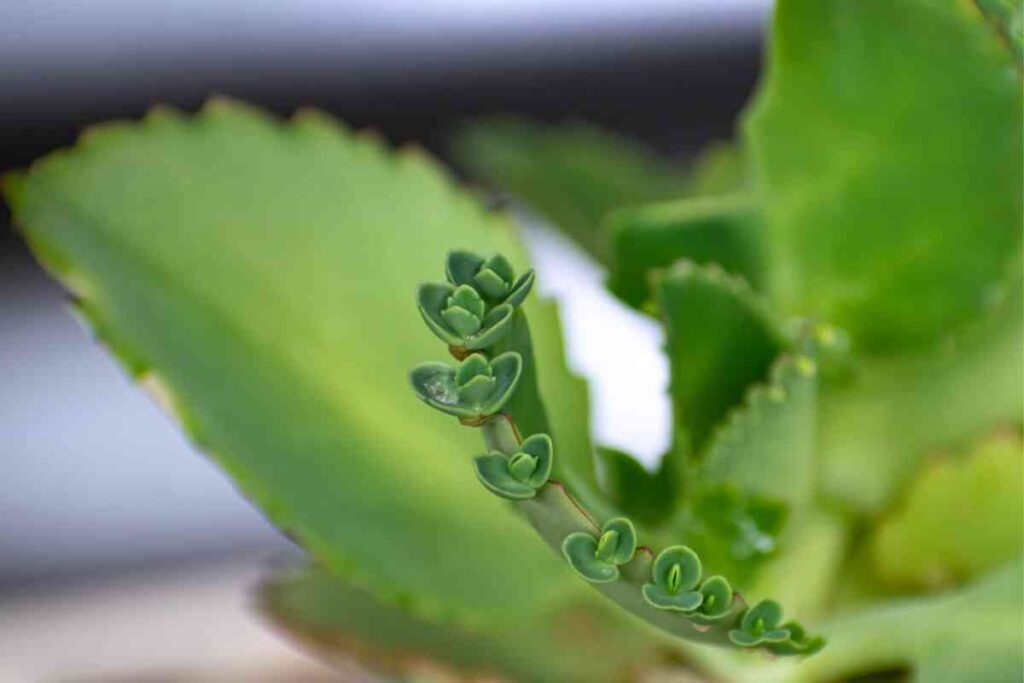
Who am I kidding?
There’s always a fun new project to do with those adorable tiny succulent pups.
Anyhow, here’s how to get a litter of succulent pups of your own:
- Leaf cutting: Gently remove a healthy leaf from the parent plant, making sure to get the entire leaf and not break it. Allow the leaf to dry out for a few days until a callus forms on the end, then place the leaf on top of moist soil in a container. Keep the soil moist and in a warm, bright location, and in a few weeks, tiny roots and new plantlets should emerge.
- Stem cutting: Cut off a healthy stem from the parent plant with a sharp, clean pair of scissors or pruning shears. Allow the cut end to dry out and form a callus for a few days, then plant the stem in moist soil. Keep the soil moist and in a warm, bright location, and new roots and growth should appear in a few weeks.
- Division: Carefully remove the parent plant from its pot and gently separate the individual plants, making sure each has its own roots. Plant each new plant in its own pot with fresh, well-draining soil and water thoroughly.
- Pups: Many succulents produce small, baby plants called pups (or offsets) around the base of the parent plant. Gently remove these and plant them in their own pot with fresh, well-draining soil and water thoroughly.
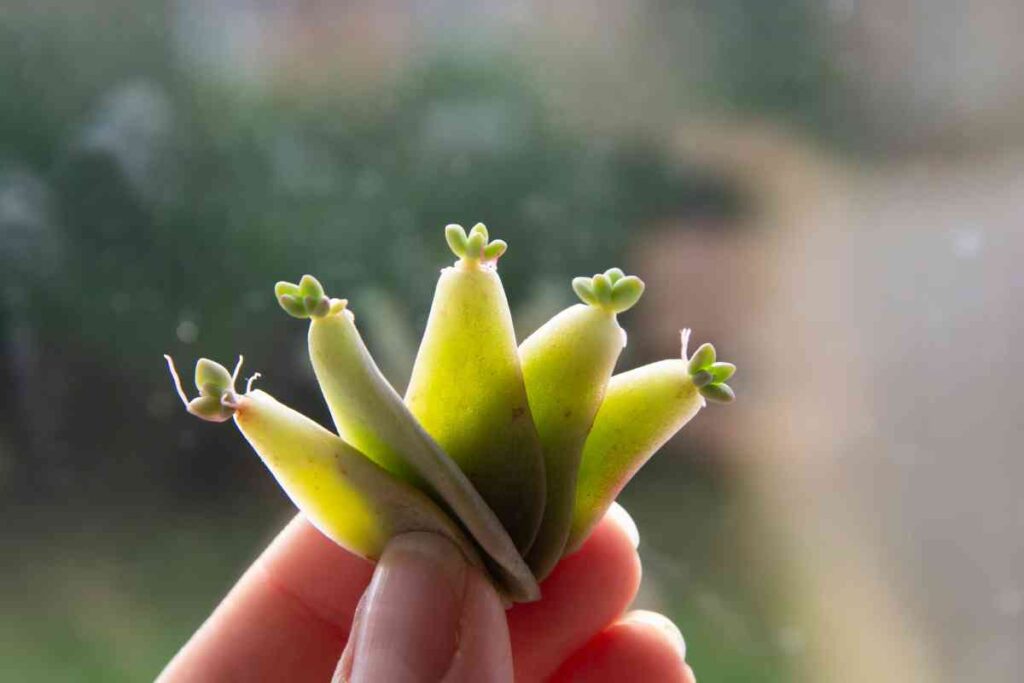
You’ll likely have the most luck if you propogate succulents in pots and then transplant them to their outdoor destination. It can be hard for a new patch of succulents to get established outside. That said, you’ll probably find that the succulent patches you establish are making pups on their own in no time.
Caring for Outdoor Succulents in Cold Weather Climates
If you live in a cold weather climate, it’s important to protect your outdoor succulents from frost and freezing temperatures. I recommend bringing your succulents indoors or covering them with a frost cloth or blanket when temperatures drop below freezing.
You can also add a layer of mulch around the base of your succulents to help insulate the soil and protect the roots. Winter hardy succulents will come back in the spring. Very cold temperatures can kill many succulent varieties, however, so do your research about what you can safely plant outdoors in your area.
Enjoy Your Succulents
The succulent plant is truly a delight. Whether keeping them as indoor plants, on the porch, or filling your garden beds, you’re sure to delight in these low maintenance plants. Remember that succulent plant care depends on replicating the dry, arid conditions they come from, and you’re likely to find it easy to care for these plants.


